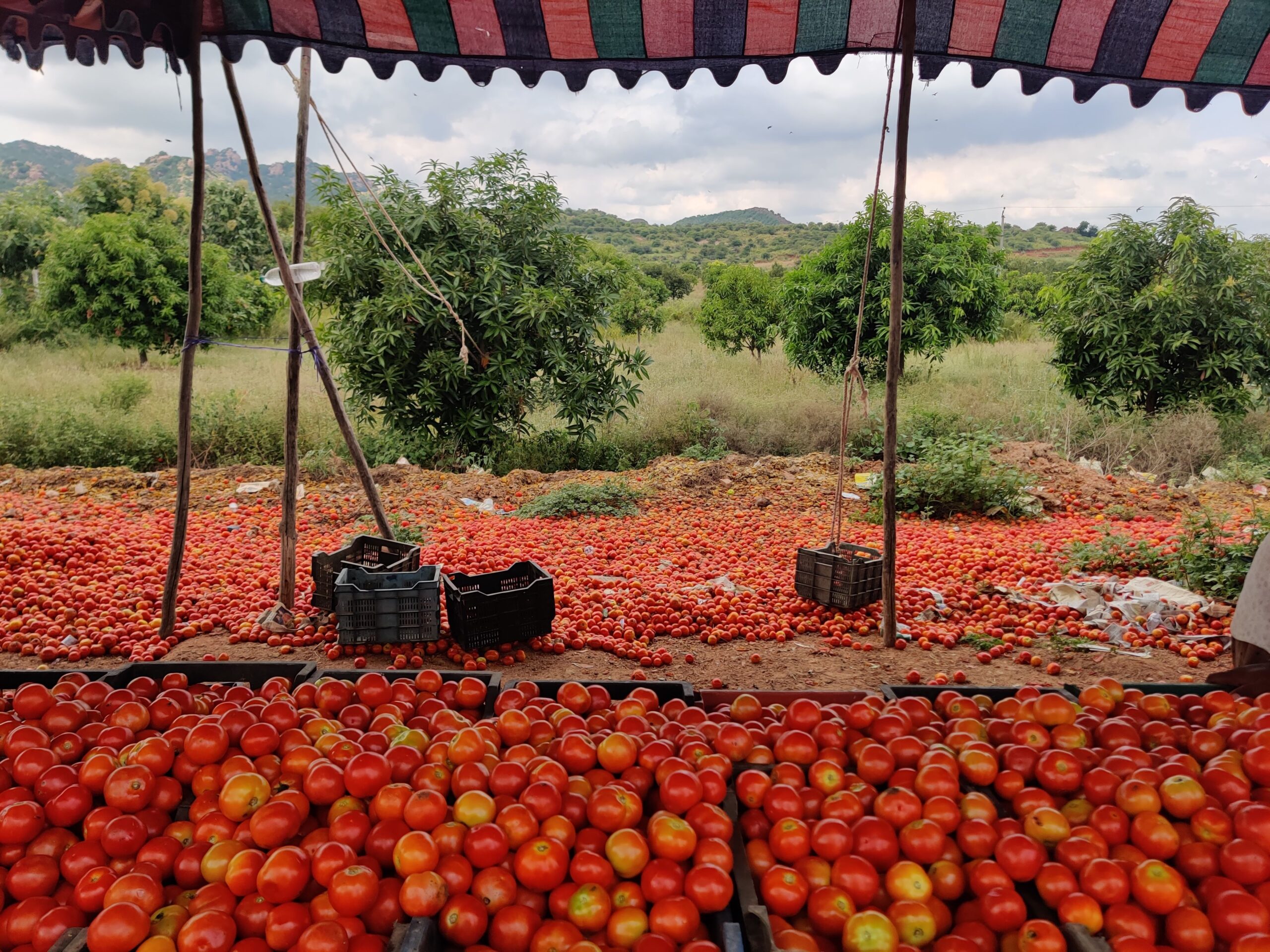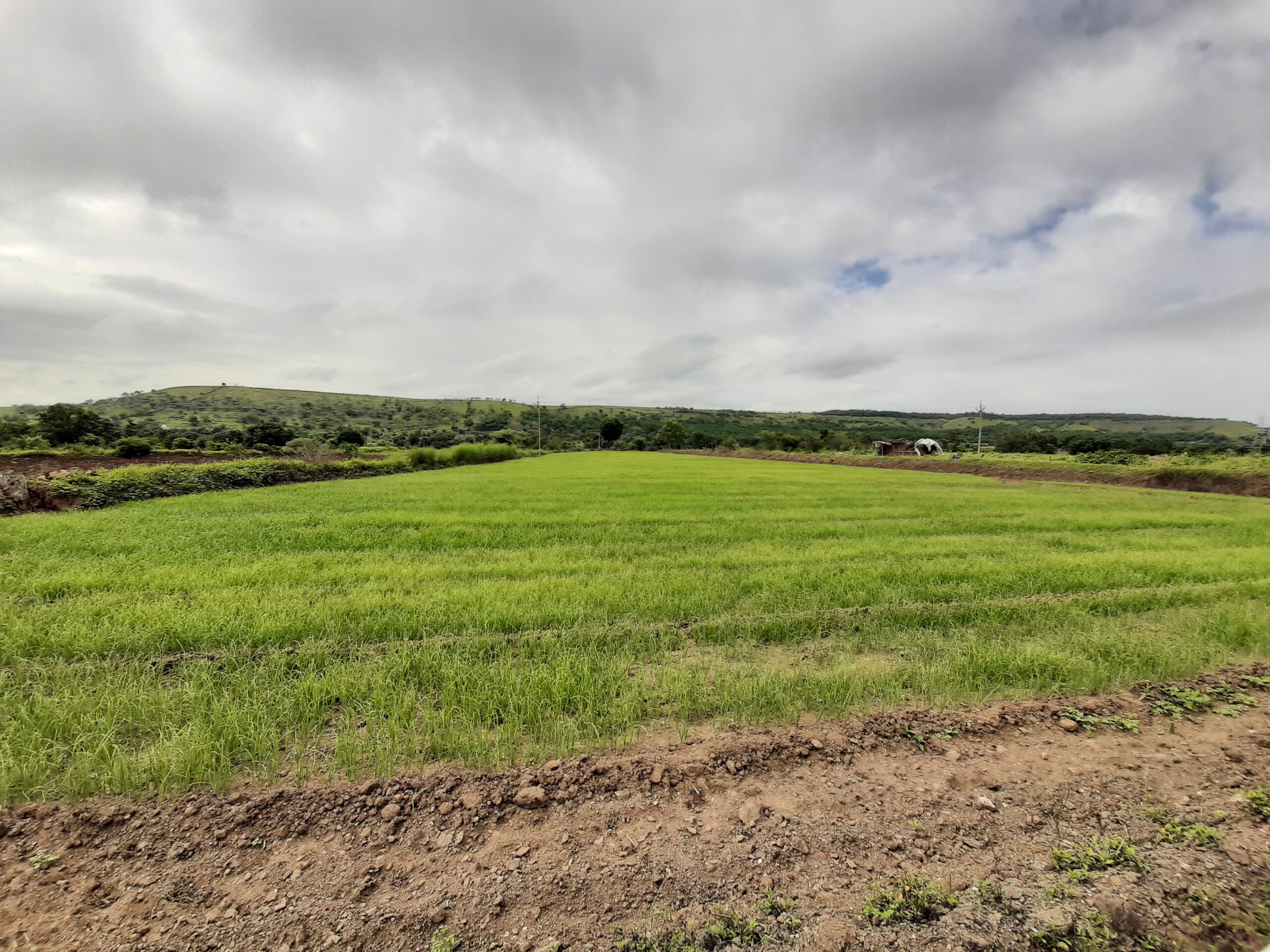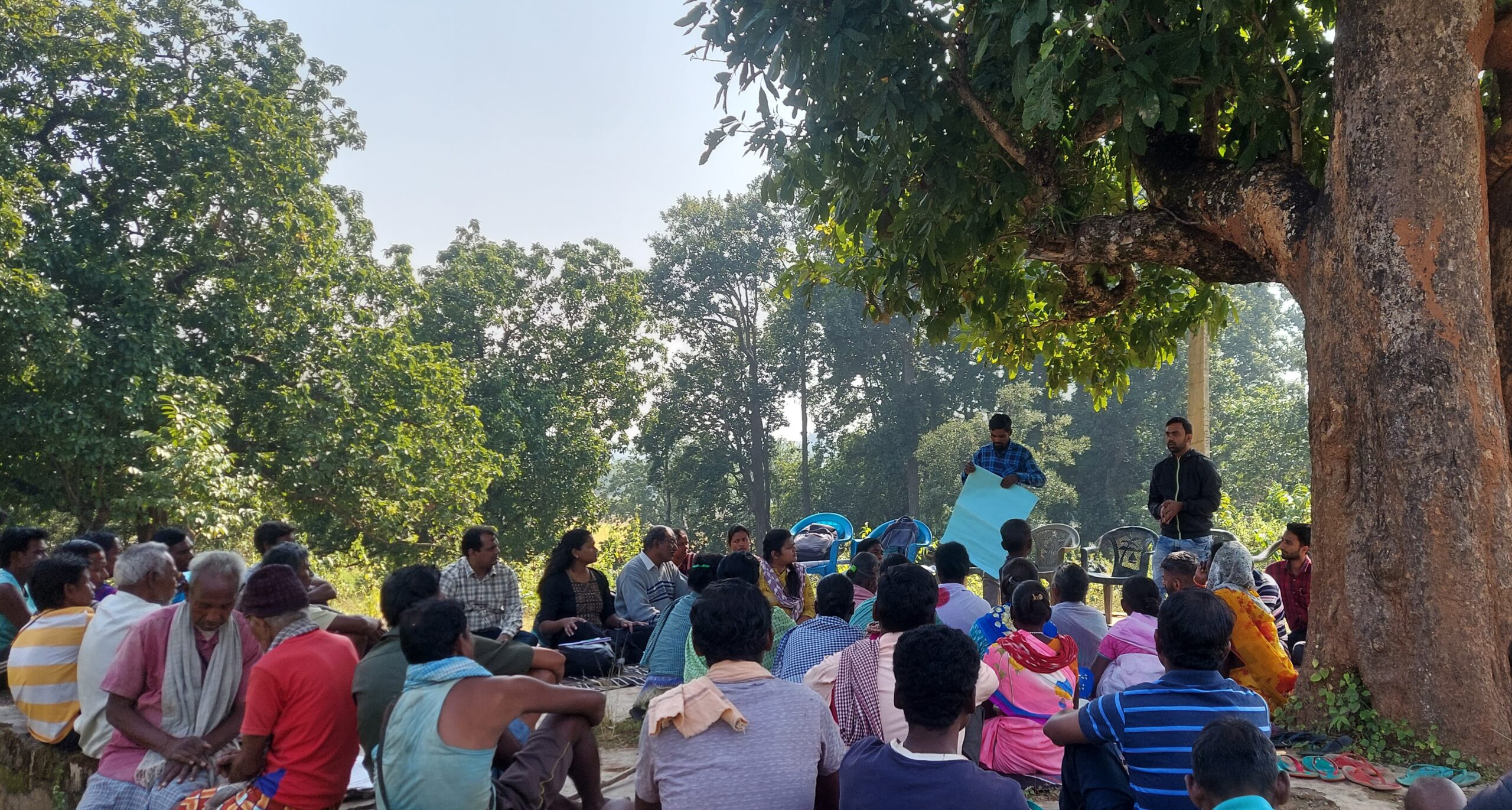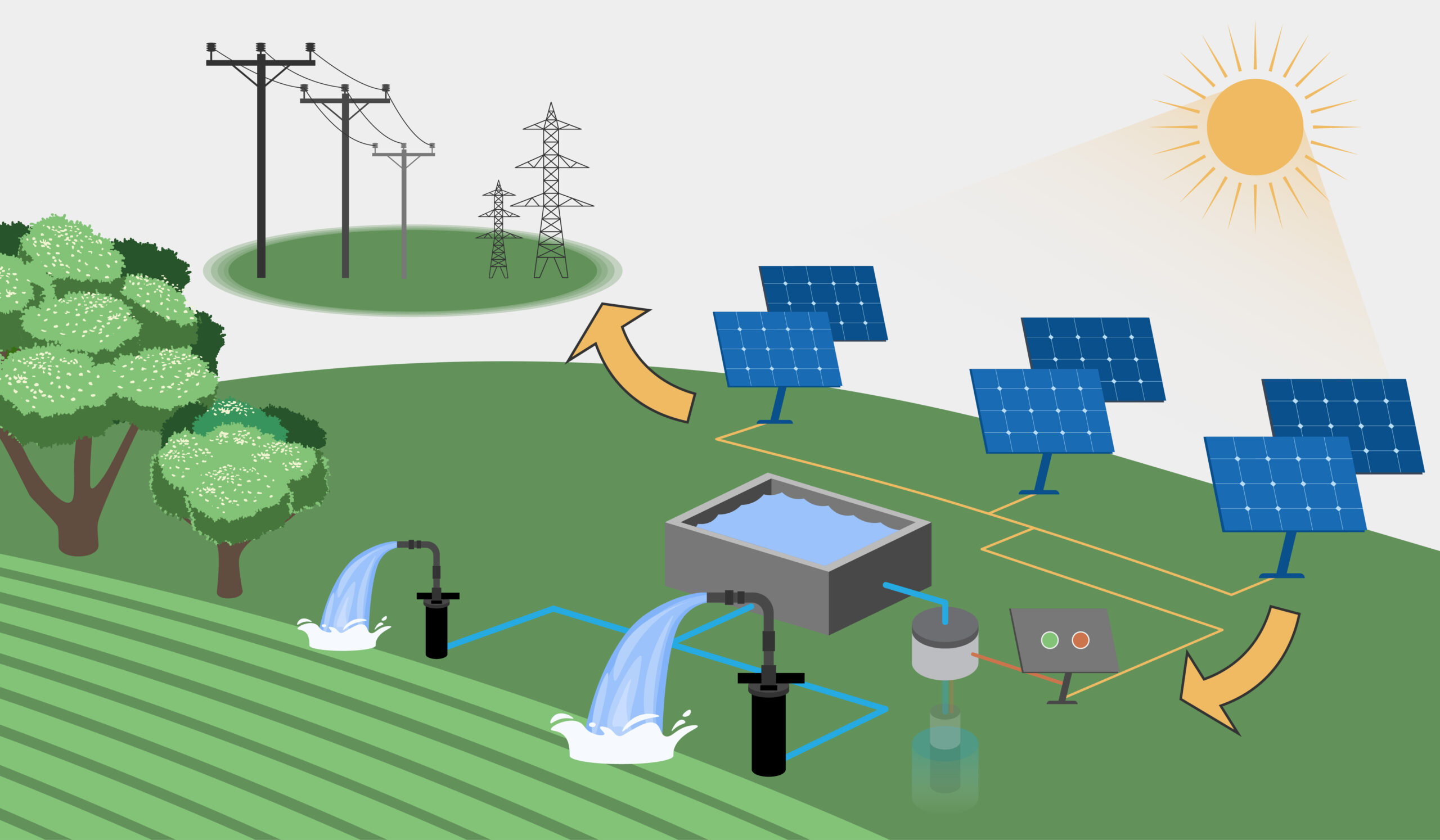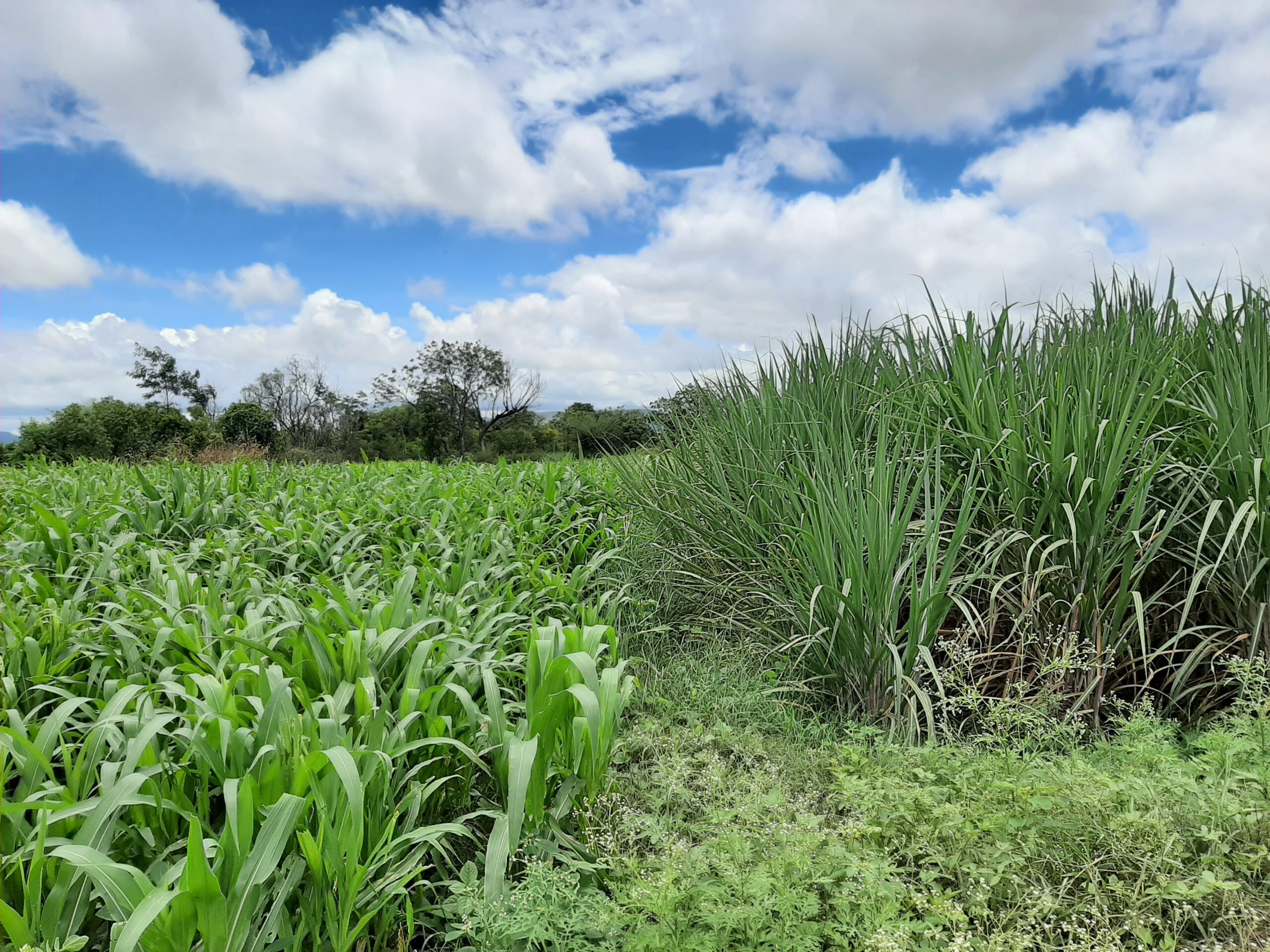How Are Farmers Likely to Respond to Solar Irrigation? Insights from Our Modelling Exercise Covering 6 Districts
Read the full report ‘Farmer Responses to Solar Irrigation in India Agent-Based Modelling to Understand Sustainable Transitions’ here.
Solar irrigation is being promoted in India to address the twin problems of irrigation access and groundwater overexploitation. However, the potential impacts of this step are not fully understood.
A majority of farmers in India are completely dependent on the rains, because they lack access to irrigation, making them more vulnerable to climate variability. Such farmers only get a single crop during the monsoon; their land is unproductive for most of the year. There is also a looming crisis of rapid depletion of groundwater threatening farmers who access wells to irrigate their land.
Solar irrigation has the potential to address both these problems. It increases access by providing energy to farmers who are not connected to the grid or use expensive diesel pump sets. It also curbs groundwater abstraction through net metering. With net metering, farmers can draw the groundwater they need and sell excess electricity back to the grid at feed-in tariffs (FiTs). However, the net impact on groundwater is unpredictable because it depends on farmers’ crop choices.
Read Op-ed in Livemint | We must break ‘lock-ins’ of water usage in agriculture
There have been some empirical studies on the impacts of solar irrigation, but the results are applicable only to the specific pilots. Often the conditions – biophysical, socio-economic and policy incentives – under which pilots are conducted are not replicable. There was also an expressed need from policymakers for ‘what if’ analyses that might predict what might happen under different conditions.
To address this, we applied an agent-based modelling (ABM) approach to understand farmer choices and transitions before and after solar irrigation. We did this in select districts, and it entailed the following:
- We developed a framework to predict how agents behave and classified regions based on:
○ resource limits, which refer to land, energy and water-related constraints that individual farmers face
○ incentives, which refer to the price guarantee they get for the crops they produce, and their perceptions of risk. - We estimated farmers’ net present value, irrigation water requirements and economic and cultural risks to identify possible options that are available.
- We interviewed experts to seek plausible transition options, and to validate options from the modelling exercise.
- Finally, we plotted the most plausible outcome in the districts under study.
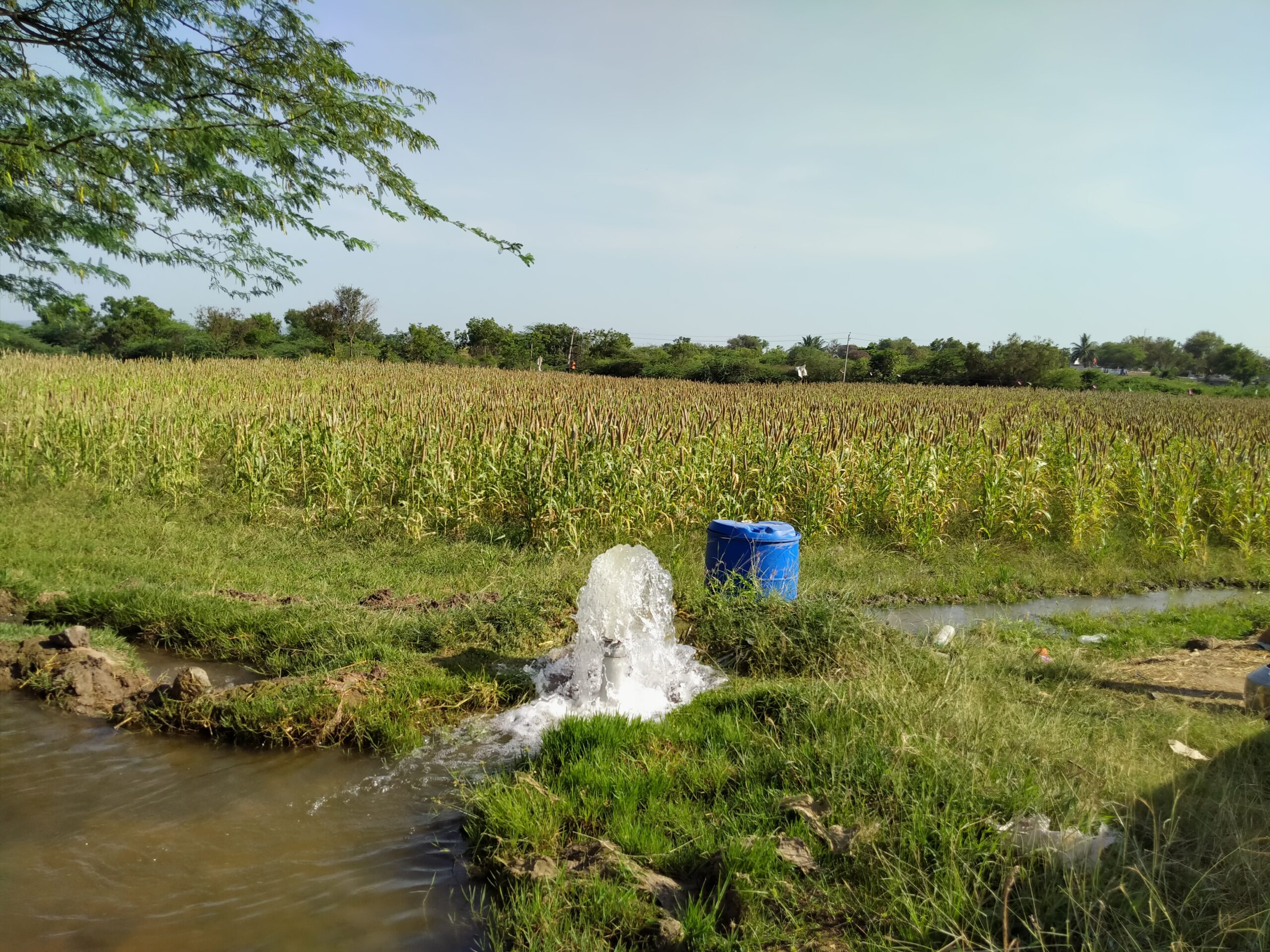
Water being pumped onto a field in rural Karnataka.
Both our agent-based model and expert consultations suggest that sustainable transitions – changes in crop choices that are both profit maximising and have less irrigation water requirements – are physically and theoretically possible.
However, in practice, the introduction of solar irrigation under assumed conditions is unlikely to result in major crop transitions across the districts we studied. This is because there are deep lock-ins in the agriculture and the ecosystems that farmers operate in. Farmers are tied to production techniques and choices that are difficult to break out of. Additionally, biophysical constraints on land and water also limit choices.
Here are our key learnings from the six case studies:
1. In Bathinda, Punjab, farmers are likely to continue growing paddy-wheat and cotton-potato, given strong government procurement systems. A sustainable transition to a less water- intensive crop will require the setting up of strong market linkages for alternatives like kinnow (a citrus tree). Otherwise, the groundwater status in most parts of the district will continue to remain critical and overexploited.
2. In West Champaran, Bihar, we assumed that solar irrigation is likely to replace diesel pump sets. Since we also assumed that they are not connected to the grid, there is no income earned from the sale of energy to the grid. Here too, farmers are likely to continue with current cropping systems, with the inclusion of a third summer crop like minor pulses, which results in a marginal increase in income and abstraction. However, aquifers in most parts of Bihar have not been overexploited yet. This means that continuing current cropping systems can still be viewed as a sustainable choice. Solar also might not be adopted if it reduces income levels, as is likely in the case of sugarcane farmers.
3. In Bengaluru Rural, Karnataka, finger millet (ragi) farmers are likely to switch over to agrivoltaics (sale of solar power with no associated irrigation), if subsidised. However, arecanut farmers will continue growing it given its strong procurement system. Most parts of this district have been categorised as critical and overexploited. Switching from water- intensive crops like arecanut, rice and sugarcane will be critical to ensure groundwater sustainability.
Read | Can Farmers Make More Money While Using Less Water?
4. In Anand, Gujarat, the dairy industry dictates the crops grown. In addition to current crop choices, we are likely to see the inclusion of a third summer crop for fodder. Groundwater levels in most parts of the district have been rising; hence continuing to grow current crops is likely to be sustainable.
5. In Botad, Gujarat, farmers grow a combination of cotton and groundnut during kharif (autumn) season. Changing this combination, and growing wheat or chickpea in the rabi (spring) season is likely to keep groundwater status sustainable. Agrivoltaics are also a real possibility in this district.
6. In Nadia, West Bengal, farmers grow rice across all three seasons, and are likely to switch over to growing rice during kharif and lentils in the rabi seasons. This is a far more sustainable option compared to the present cropping pattern as the water requirement declines drastically and farmers may be able to earn better.
Solar irrigation alone cannot change farmers’ decisions
While solar irrigation offers options to circumvent the political non-feasibility of doing away with some policies pertaining to agriculture (Minimum Support Price – MSP) and energy (free or highly subsidised electricity), it will still be inadequate to change farmers’ crop choices.
But the situation is not hopeless. For solar irrigation to result in crop diversification and the cultivation of crops that fit in the water budgets of specific regions, sociotechnical evolutions also need to occur concurrently. This means that the entire system ranging from pre-production to consumption will have to evolve for true change to take effect. Changes in agricultural policies, like MSP for less water-intensive crops, can help. And so can energy policies, like the removal of electricity subsidies that allows farmers in states like Punjab free or highly-subsidised access to the grid. Such moves can pave the way for truly impactful and long-lasting change stemming from the introduction of solar irrigation.
Read Op-ed in IDR | Climate mitigation: Can carbon credits ensure farmers don’t pay the price?
To our knowledge, this is the first research study that has attempted to apply ABM in the context of solar irrigation and its likely impact on farmers’ incomes and groundwater sustainability in India. Given that there are opportunities and constraints that vary widely across states, it is critical to closely examine local contexts. It is also important to use the ABM approach to accurately gauge where solar irrigation can make a significant difference. This would be more effective than force-fitting solar irrigation in regions where it could result in exacerbating current precarity.
Credits
Acknowledgement: We would like to thank the International Water Management Institute (IWMI) for funding this research project and providing contextual feedback for developing this framework. We are also grateful to Rohini Nilekani Philanthropies (RNP), who co-funded this project.
The authors conducted this work when they were with the Centre for Social and Environmental Innovation at the Ashoka Trust for Research in Ecology and the Environment (CSEI-ATREE). WELL Labs is now taking it forward in collaboration with ATREE.
Visualisation by Aparna Nambiar
Edited by Kaavya Kumar
If you would like to collaborate, write to us. We would love to hear from you.
Follow us and stay updated about our work:

